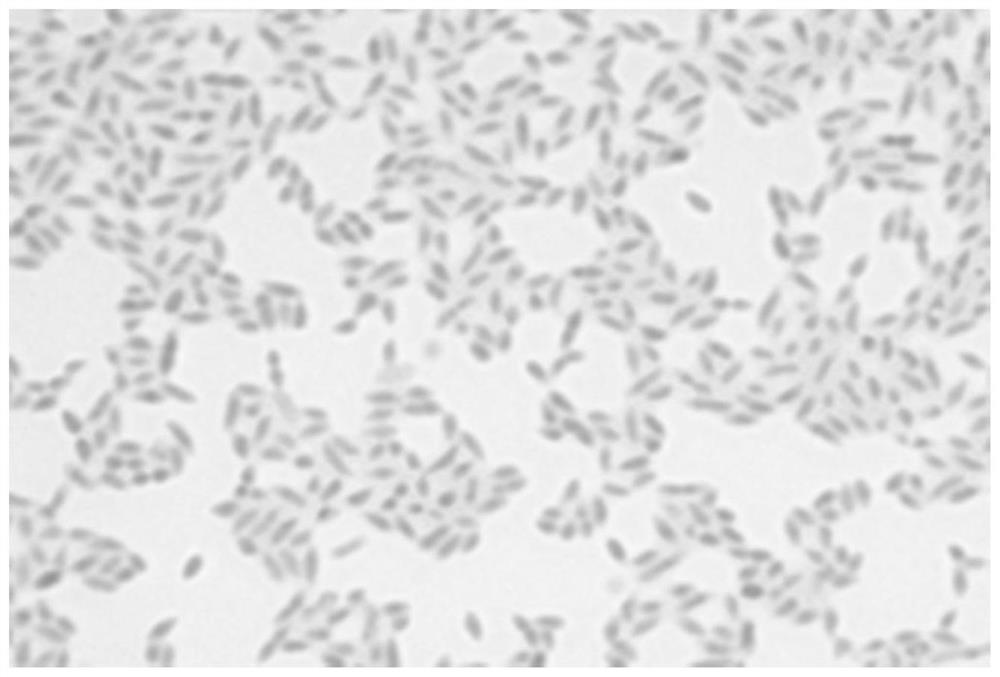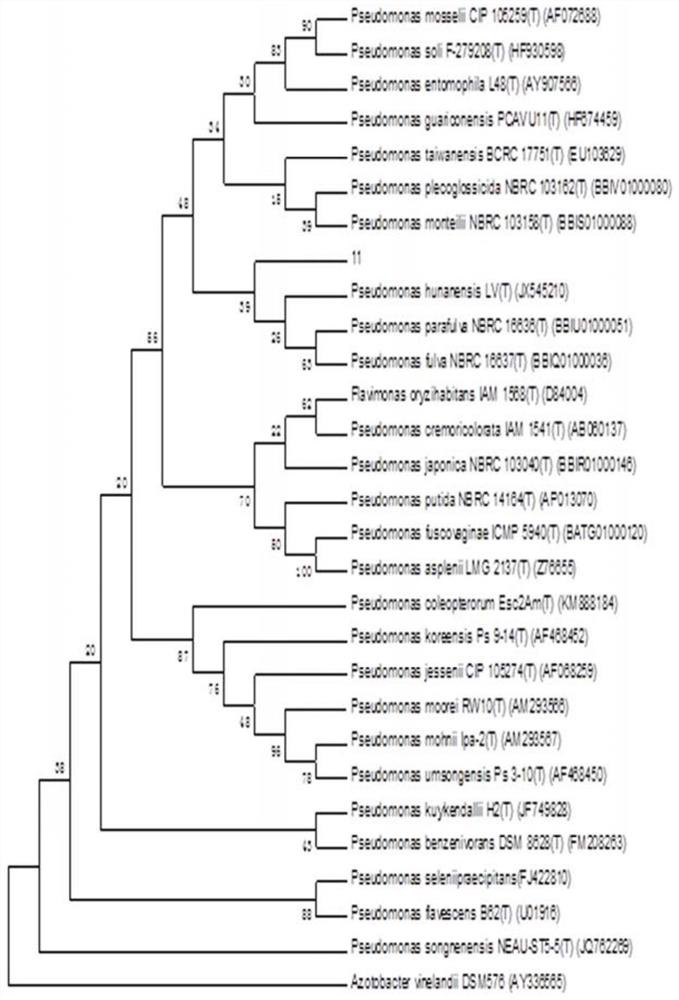Method for reducing total mercury content in rice
A rice and strain technology, applied in microorganism-based methods, horticultural methods, rice cultivation, etc., can solve the problems of complex preparation of sodium selenite-modified biochar, damage to soil ecosystems, and high energy consumption for biochar preparation. , to achieve the effect of less workload, simple spraying operation and less environmental damage
- Summary
- Abstract
- Description
- Claims
- Application Information
AI Technical Summary
Problems solved by technology
Method used
Image
Examples
Embodiment 1
[0030] The detection of the bacteria Pseudomonas taiwanensis used in the present invention
[0031] (1) Form
[0032] Bacteria Pseudomonas taiwanensis microscope (1000X) observation photo used in the present invention sees figure 1 , see plate colony morphology figure 2 .
[0033] (2) 16S rRNA gene sequence analysis
[0034] ①16S rRNA gene sequence
[0035]
[0036]
[0037] ②16S rRNA gene sequencing BLAST results
[0038] 16S rRNA gene sequencing BLAST results are shown in Table 1.
[0039] Table 1 Bacteria Pseudomonas taiwanensis 16S rRNA gene sequencing BLAST result used in the present invention
[0040]
[0041]
[0042]
[0043]
[0044]
[0045] ③Evolutionary tree
[0046] evolutionary tree image 3 .
[0047] (3) Physiological and biochemical characteristics of bacteria Pseudomonas taiwanensis used in the present invention
[0048] The test results of the physiological and biochemical characteristics of the bacteria Pseudomonas taiwanensi...
Embodiment 2P11
[0055] Experimental analysis of embodiment 2P11 bacterial strain processing water environment mercury
[0056] (1) Mercury speed test kit analysis:
[0057] 1) Test steps:
[0058] ① Preparation of culture medium: prepare 10-fold diluted tryptone soybean broth medium, and then add HgCl to the culture medium 2 , so that Hg 2+ The final concentration is 1mg / L;
[0059] ②Activation of the P11 bacterial classification: get the preserved P11 bacterial classification (when the Abs600 (absorbance value at 600nm) of the activated P11 bacterial liquid is at 0.4-0.5, mix it with 30% glycerol in an equal volume ratio to obtain the preserved P11 bacterial classification. P11 strains are stored below -20°C), inoculated in 10-fold diluted tryptone soybean broth medium according to the volume ratio of 1:100, and cultivated in a shaking shaker at 30°C and 180 rpm for 10-12 hours, that is The Abs600 of the bacterial liquid is between 0.4-0.5, that is, the activated bacterial liquid of P11 ...
Embodiment 3
[0072] Embodiment 3 The inventive method reduces the effect test of total mercury in rice
[0073] 1) Test steps:
[0074] ①Grouping: Divide the mercury-contaminated soil into three groups, group A is the blank control group, group B is the P11 culture solution treatment group, and group C is the microbial organic fertilizer (streptomyces, actinomycetes, Bacillus subtilis , Bacillus megaterium, Bacillus jelly-like, Pseudomonas, etc.) as base fertilizer and then treated with P11 culture medium.
[0075] ② Rice planting: Divide the soil into pots according to groups, and apply 150g / Kg (soil) to group C in the step ① of the microbial organic fertilizer, and then water all the pots to cover the soil, and then cultivate The seedlings in about 13 days are inserted.
[0076] ③P11 culture solution preparation: the activated bacterial solution of P11 described in Example 2 was inoculated in the improved M9 medium (dipotassium hydrogen phosphate 6 g / L, potassium dihydrogen phosphate 3...
PUM
 Login to View More
Login to View More Abstract
Description
Claims
Application Information
 Login to View More
Login to View More - R&D
- Intellectual Property
- Life Sciences
- Materials
- Tech Scout
- Unparalleled Data Quality
- Higher Quality Content
- 60% Fewer Hallucinations
Browse by: Latest US Patents, China's latest patents, Technical Efficacy Thesaurus, Application Domain, Technology Topic, Popular Technical Reports.
© 2025 PatSnap. All rights reserved.Legal|Privacy policy|Modern Slavery Act Transparency Statement|Sitemap|About US| Contact US: help@patsnap.com



